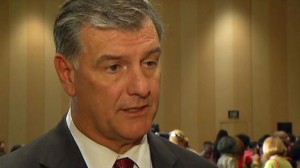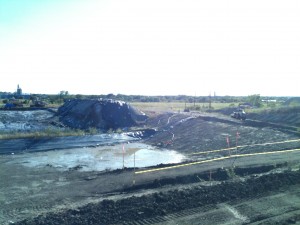Air Quality
Why Does The Frisco City Council Want to Build a Lead Fukushima in the Middle of Town?
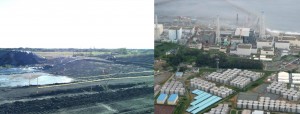 On Monday the Washington Post published a comprehensive look at the troubled Fukushima nuclear power plant site two-and-a-half years after meltdown, and concludes that the clean-up "is turning into another kind of disaster." The same could be said of the Exide lead smelter clean-up in Frisco, and indeed the stories parallel one another in eerie ways.
On Monday the Washington Post published a comprehensive look at the troubled Fukushima nuclear power plant site two-and-a-half years after meltdown, and concludes that the clean-up "is turning into another kind of disaster." The same could be said of the Exide lead smelter clean-up in Frisco, and indeed the stories parallel one another in eerie ways.
One of the most difficult problems at Fukushima has been what to do with so much groundwater flowing through the site. It's already retaining enough radioactive water to fill Yankee Stadium, but almost 400 tons a day still flows into the Pacific. As it turns out, the plant site sits on top of an old riverbed.
One of the most difficult problems at the Exide site is the amount of groundwater running underneath it, flowing into Stewart Creek and on to Lake Lewisville, a source of drinking water for Dallas. As it turns out, some of the most contaminated parts of the Exide facility were built on top of an old branch of Stewart Creek and the facility almost entirely sits in the creek's flood plain. So much groundwater has been found under Exide that the state had to admit that the entire site belonged in a different clean-up category that's 100 times stricter than what it had initially proposed because we could end up drinking that water.
In Japan, Tokyo Electric, the company responsible for the accident three years ago is now responsible for the site's clean-up. It's not going well.
In Frisco, Exide Technologies, the company responsible for causing widespread lead contamination is also in charge of the clean-up of the site. That's not going well in Frisco either.
Tokyo Electric is on the brink of bankruptcy. Exide is already there.
Tokyo Electric keeps under-estimating the scope of the required clean-up, it "doesn't have enough of that questioning attitude" according to one U.S. nuclear official, making the same mistakes that lead to the meltdown. Likewise, Exide keeps underestimating the extent of the contamination at its Frisco site and how much effort it will take to clean it up. It's clean-up plans have been rejected by the state and EPA.
Failure by Tokyo Electric to contain the groundwater problem at Fukushima has lead the government to propose a $500 million "ice wall" that would hold back tons of radioactive water contaminating from the ocean. Failure of Exide to adequately isolate its toxic lead waste from the groundwater running underneath it has prompted a consultant for the City of Frisco to propose building a $23 million, mile-long "slurry wall" to surround a permanent toxic waste landfill on the Exide site, designed to hold back waste from contaminating Stewart Creek and Grand Park.
Tokyo Electric had a plan to "decontaminate" the groundwater on site, only it's never worked, leaving tons and tons of highly radioactive water in storage at the plant. Exide had a plan to "decontaminate" its illegally-stored toxic waste on site, but can't seem to find a way to make it work, leaving thousands of tons of highly toxic lead waste stored at the smelter site.
Tokyo Electric has lost the trust of government officials and the public at large, but is still being allowed to direct the clean-up of its own site. Likewise, even the City of Frisco is skeptical of Exide these days, but the company is still setting the pace for its own clean-up.
But there is one important exception to these parallels. Frisco still has time to change its fate. By December 9th, the Frisco City Council must submit a claim to the judge hearing the Exide bankruptcy case. It can submit a claim for the $23 million option that leaves a toxic landfill in Frisco forever, or it can submit a claim for $135 million, the amount its consultant says is needed to dig-up Exide contamination and haul it away so the land can be redeveloped.
Why would the Council choose any other option other than the most comprehensive one? Great question that no one at City Hall has been able to answer. The submission of the claim to the judge doesn't obligate the city to pay for the clean-up. It's a statement of its goals for the clean-up.
Nobody expects the City to get everything it's asking for, but in a proceeding where many other creditors have lined up to carve up Exide's assets, it needs to protect its self-interests by asking for the maximum credible amount. That's the $135 million figure, backed-up by a report from a city consultant that describes the extensive contamination caused by Exide and what it will take to remove it.
If you haven't already, please send an e-mail to the Frisco City Council requesting that they submit the $135 million claim by the court's deadline of December 9th. To approve the toxic landfill option is to consign Frisco to getting fully "Fukushimaed."
Dallas Drilling Update: It’s All About Holding Mayor Rawlings to His Word Now
“I am personally opposed to urban oil and gas drilling in Dallas.
To paraphrase Ecclesiastes, there is a place for everything under heaven, and I don’t think that place for drilling is in Dallas, in an environment like this.
We continue to grow, and there are generally too many unknowns in respect to urban drilling and its effects on our community’s health and safety. This city can be picky about what type of growth we have.
To that end, I will be supporting the efforts of our CPC on new gas drilling ordinances, to make sure the standards are such to ensure the safety of our citizens.”
– Dallas Mayor Mike Rawlings
August 28th, 2013
Statement before City Council vote on the Trinity East gas drilling and production Special Use Permits
On his way to vote in favor of allowing gas drilling in Dallas, the Mayor of North Texas' largest city seemingly endorsed a perpetual moratorium on gas drilling in Dallas.
And even as he endorsed a moratorium on gas drilling in Dallas, the Mayor also endorsed a City Plan Commission draft ordinance on gas drilling that still allows for it to take place, albeit under very selective conditions.
So which words from that August 28th declaration do we hold the Mayor to when the new gas ordinance comes up for a Council vote?
"I will be supporting the efforts of our CPC on new gas drilling ordinances"
That's all you need to know. There is no qualification there, no balance between the CPC draft and something else. Just full-throated endorsement of the draft, as is. Make him live up to this support in the form of a simple up-or-down vote on the entire ordinance and you've got one of the toughest new templates for how to regulate gas drilling in the state of Texas.
Forget about the first part. Even if you want a moratorium on drilling in Dallas, that's not the issue that will be up for a vote. Nor is there the slightest chance that such an option will appear as an alternative to the approval of a new gas ordinance, no matter how strongly Mayor Rawlings, or Scott Griggs, or Adam Medrano, or Philip Kingston personally feels about it. The choice is between the really bad old gas ordinance and the really good new gas ordinance.
Even if you think the ordinance could use improving (and everyone on this side of the aisle thinks it does), you don't have the votes on the council to improve it. Residents could only muster six "no" votes for the Trinity East fight. Fortunately, they only needed four. You need eight for each and every improvement you want to make to the gas ordinance. They aren't guaranteed.
Mayor Rawlings is one of only three or four mystery votes in the middle that determine the new ordinance's fate, and the most likely weather vane for the whole lot. As he goes, so probably goes North Dallas newcomers like Jennifer Gates and Lee Kleinman. Assuming residents can hold onto the "Trinity East Six," that gives you 8-9 votes. Then, seeing the winds shift, you don't know what other Council members you pick-up trying to get on the right side of things. Chances of improving the ordinance begin and end with the Mayor and what does the Mayor say? He's on the record as supporting the CPC draft, not the draft with some tweaks.
Of more concern to residents should be the eight votes that the other side might be able to muster to weaken some of the ordinance's key provisions by opening it up to individual itemized tallies. Industry starts out with at least five hard-core supporters. Add three votes to a rollback here or there, and the ordinance that it took months to make good might be completely unrecognizable by day's end. When you open up the draft to tweaks, you're taking a big gamble that you're only going to tweak it in good ways. There could be bad tweaks as well.
The safest, surest way to get what what industry is calling a de-facto moratorium on gas drilling in Dallas is having the Mayor agree to a single yes or no vote on the entire draft ordinance, an option he says he already supports. The new Dallas gas ordinance matches the lengthiest set backs in North Texas. It's tough on compressor pollution and location. It has robust disclosure language and insurance and bond requirements. It recommends a brand new air pollution off-set program for Dallas to explore. Is the ordinance perfect? No. But it's the best we can get with the votes that we have. And it's enough to keep drillers like Trinity East out of Dallas for good.
Improving it will take the assistance of Council members who aren't behind the dais yet. In the next municipal election cycle in 2015, almost half of the current City Council, and more than half of the ardent gas industry supporters, will be termed out. That's going to be the time to get the rest of your eight votes for a better gas drilling ordinance, and lots of other improvements as well.
Although there's still no date for an actual vote on the new gas ordinance, the city staff briefing – brace yourselves for one last Tammy Palomino appearance – to the Council is scheduled for the morning of Wednesday, November 6th at Dallas City Hall. If he Mayor wants this to go down smoothly, expect to hear a comment or two in support of the package as a whole being adopted. Residents might have a much clearer picture of where and how this will all be going down by session's end. Stay tuned.
Study Reveals Cancer Hot Spots Downwind of Canadian Oil and Gas Processing Centers
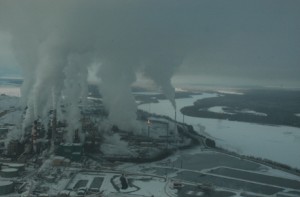 On the heels of the World Health Organization declaring air pollution a carcinogen, a study published this week from the University of California-Irvine and University of Michigan found higher levels of specific carcinogens in communities downwind of Canadian "oil, gas and tar sands processing zones", and higher rates of Luekemia and non-Hodgkin’s lymphoma among men living in those downwind communities.
On the heels of the World Health Organization declaring air pollution a carcinogen, a study published this week from the University of California-Irvine and University of Michigan found higher levels of specific carcinogens in communities downwind of Canadian "oil, gas and tar sands processing zones", and higher rates of Luekemia and non-Hodgkin’s lymphoma among men living in those downwind communities.
Despite their rural location, the recorded levels of the carcinogens, including 1,3-butadiene and benzene, were higher than in some of the world's most polluted cities. Examining area health records that went back a decade showed the number of men with leukemia and non-Hodgkin’s lymphoma was greater in the communities closest to the pollution plumes.
The authors strongly recommended that the industrial emissions be decreased to protect both workers and nearby residents.
“Our study was designed to test what kinds of concentrations could be encountered on the ground during a random visit downwind of various facilities. We’re seeing elevated levels of carcinogens and other gases in the same area where we’re seeing excess cancers known to be caused by these chemicals,” said UC Irvine chemist Isobel Simpson, lead author of the paper in Atmospheric Environment. “Our main point is that it would be good to proactively lower these emissions of known carcinogens. You can study it and study it, but at some point you just have to say, ‘Let’s reduce it.’
Co-author Stuart Batterman, a University of Michigan professor of environmental health sciences, agreed: “These levels, found over a broad area, are clearly associated with industrial emissions. They also are evidence of major regulatory gaps in monitoring and controlling such emissions and in public health surveillance.”
Dr. Batterman is familiar to Downwinders old timers as being the first scientist to take on the state's laughable "Health Risk Assessment" of TXI's burning of hazardous waste at it Midlothian cement plant. In what became known simply as the "Batterman Report," his mid-1990's critique of the official document was devastating in its scope and depth. It became a template on how to deconstruct any TCEQ attempt to gloss over the dangers of living downwind of a large polluter.
In this new study, Dr. Batterman and his colleagues monitored emissions in the rural Fort Saskatchewan area downwind of major refineries, chemical manufacturers and tar sands processors owned by BP, Dow, Shell and other companies in the so-called “Industrial Heartland” of Alberta. Taking random one-minute samples in 2008, 2010 and 2012, the results were very similar over time – amounts of some of the most dangerous Volatile Organic Compounds were 6,000 times higher than normal. Higher than in Mexico City during the 1990s or in the still polluted Houston-Galveston area.
Simpson said the findings were important for other residential areas downwind of refineries and chemical manufacturers, including parts of Los Angeles.
“For any community downwind of heavy industrial activity, I would say it’s certainly prudent to conduct surveys of both air quality – especially carcinogens – and human health."
Cement Plants and Gas Plays Affecting Ozone Levels In….San Antonio?
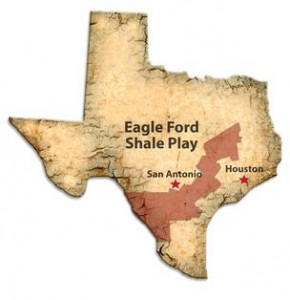 For decades DFW was the only major urban area in Texas to have its air quality challenged by the cement industry. Repeated modeling over the course of the last several local air plans showed that the concentration of the plumes from three huge cement plants in Midlothian could increase downwind ozone levels significantly. Part of this is the voluminous emissions produced by the kilns and part of it's location, location, location – the close proximity of these cement plants to the center of DFW. So much so that you can see their smokestacks from I-20 in Grand Prairie and Arlington.
For decades DFW was the only major urban area in Texas to have its air quality challenged by the cement industry. Repeated modeling over the course of the last several local air plans showed that the concentration of the plumes from three huge cement plants in Midlothian could increase downwind ozone levels significantly. Part of this is the voluminous emissions produced by the kilns and part of it's location, location, location – the close proximity of these cement plants to the center of DFW. So much so that you can see their smokestacks from I-20 in Grand Prairie and Arlington.
Then beginning in 2006 or so, the area's air shed began to be reshaped by the presence of gas production facilities as the Barnett Shale was opened up to exploitation from fracking, a process freshly exempted from just about every federal environmental regulation with passage of the 2005 Energy Act. But unlike large "stationary sources" like cement plants, these gas facilities were spread out over a large area, right in the middle of the Metromess, and were except from the "off-set" requirements of other large polluters. Even though their collective emissions were as large or larger than any other single industrial source, their decentralization allowed their operators to release their tons of pollution into the air without ever having to consider its impact on local smog levels.
That one-two punch of local industrial pollution flies in the face of the office park business image of DFW. Houston has traditionally been the city where industry has made it harder to breathe. In North Texas, it's supposed to be all about cars and trucks. But those cars and trucks lay a mostly uniform blanket of ozone over the entire area, whereas the gas production facilities and the cement plants are concentrated fire hoses of smog-forming pollution that can impact specific monitors over and over again.
And all of this has taken place during a time when the official federal ozone standard has been a relatively high 85 parts per billion. Beginning in 2015, the standard becomes 75 ppb, and it might drop to 65-70 by 2020.
Texas cities like Austin and San Antonio have had little problem complying with the higher standard, but now face obstacles to coming in under the wire of a 75 ppb rule.
For one thing, the only other large concentration of cement plants in Texas besides Midlothian is located along the I-35 corridor from Buda, south of Austin to North San Antonio. Because prevailing winds have often carried the pollution from these plants away from central Austin or San Antonio, they haven't been seen as much of a threat. But now urbanization is increasingly creeping westward into the downwind path of these plumes, adding some heft to the emissions and combining with them to elevate ozone levels.
And then there's the Eagle Ford Shale gas play, the new Wild West of fracking in Texas, taking place directly upwind of central San Antonio. Unlike the urban drilling in the Barnett Shale, most of the activity in the Eagle Ford is taking place in unincorporated parts of South Texas counties. There haven't been any reliable emissions inventory of the pollution coming out of he Eagle Ford, but it's considerable. Anecdotally, there seems to be a lot of flaring that DFW never saw. Because of the amount of production taking place, as well as its location upwind during the summer "Ozone Season," Central Texas is starting to sweat about its impact on its own air quality.
That concern has prompted a regional modeling exercise which is supposed to determine how much, if any, impact the drilling in the Eagle Ford is having on the Alamo City's air. Back in July, we reported that the preliminary numbers of this study showed that gas production was capable raising local ozone levels by as much as 3 to 7 parts per billion by 2018 – exactly when all Texas cities must be in compliance with the new 75 ppb standard.
Maybe 3-7 ppb doesn't seem like much. And it isn't, unless you're already at or above the new 75 ppb standard and that amount will put and keep you over that red line. Like San Antonio in 2013. The July headline in the San Antonio paper was unambiguous: "Eagle Ford drilling is polluting San Antonio's air"
But it looks like someone at the San Antonio Council of Governments is taking a page from DFW and TCEQ officials and downplaying those preliminary numbers from last summer.
Previous studies show that emissions of ozone-forming chemicals from sources other than drilling have dropped significantly since 2007 despite the city's population growth, said Steven Smeltzer, AACOG's environmental manager. Smeltzer attributes the improvement to new vehicle standards and voluntary reductions by local industries.
Preliminary numbers from the AACOG study also indicate that much of the problem lies in the Eagle Ford. InsideClimate News obtained a copy of the data, which have not been made public. The data show that during the months when San Antonio experiences the highest ozone levels—April through October—oil and gas development produced about half the amount of ozone-forming emissions per day as all other industrial sources combined.
Bella said the data came from an early version of the study that wasn't as thorough as later drafts. "My sense is they're really not worth using…They're not solid numbers."
He declined to comment on whether the numbers are close to the latest estimates. What matters isn't the number, he said, but the process behind the study. If the science isn't right, then it's "garbage in, garbage out."
Yeah, we know. Believe it or not, citizens had to literally force the TCEQ to consider the effect of the pollution from Midlothian cement plants before they discovered, wow, they really do have an impact. Likewise, it took Dr. Al Armendariz's 2009 study of Barnett Shale pollution for the state to even consider local gas sources might be a contributing factor to the DFW smog problem – although TCEQ officials are still doing their best to deny it. The largest purveyor of junk science in Texas is the Texas Commission on Environmental Quality. Remember that in 2012, TCEQ's computer model told us to expect the lowest level of smog ever recorded in DFW. Instead we got the highest levels recorded since 2008 or so. So yeah, GIGO.
That's why it's disappointing to see the Council of Government official try to use the same strategy with this new study – whose final edits will be made by TCEQ, not an independent entity. Just like with TCEQ's Wednesday's ruling against 7000 Dallas County doctors that said there's no link between smog and public health, Rick Perry's agency can't afford to admit the state's gas plays are making the state's air illegal and unsafe.
Like San Antonio, almost every other category of pollution in DFW has decreased over the last 6 years – except gas industry pollution. It's the one category of emissions that's grown and grown and grown – to the point where the state itself admitted that the industry was releasing more smog-forming Volatile Organic Compounds than all the trucks and cars on the road in North Texas. As DFW continues to linger in violation of an almost 20-year old obsolete ozone standard, it's the gas industry that is the logical culprit for the backsliding. It's the one variable that's going the opposite direction as all the others. But despite the overwhelming evidence to the contary TCEQ is busy defending the Shale from any charges that it has the least bit of impact on area smog, even to the point of ignoring basic air modeling chemistry.
San Antonio officials may want to deny the link between the Eagle Ford and smog in their city, may want to down play it, and they'll have plenty of rhetorical help from Austin. But when it comes to TCEQ rhetoric versus the real world, the monitors in the field tell the tale. Negligence doesn't make your air cleaner.
Poultry Expert to Doctors: You’re Wrong, Ozone Doesn’t Cause Asthma
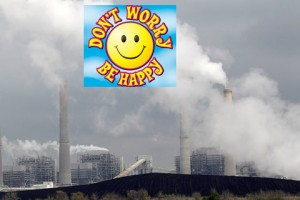 Feigning allegiance to some sort of science the scientists themselves don't use, the Texas Commission on Environmental Quality rejected a petition by the Dallas County Medical Society to put new pollution control equipment on three large coal power plants upwind of DFW, saying there's no real conclusive evidence that smog causes respiratory problems like asthma.
Feigning allegiance to some sort of science the scientists themselves don't use, the Texas Commission on Environmental Quality rejected a petition by the Dallas County Medical Society to put new pollution control equipment on three large coal power plants upwind of DFW, saying there's no real conclusive evidence that smog causes respiratory problems like asthma.
It may come as a surprise to newcomers, but the largest state environmental agency in the U.S. has never recognized a connection between ozone pollution, or smog, and respiratory problems. Austin has fought the implementation of every new ozone standard ever proposed by EPA and played down any causal link suggested by recent studies. If you want to know what's behind the current push in the US House of Representatives to discredit the historical "6-Cities Study" – the basis for the original connection between smog and public health, look no further than the Texas Commission on Environmental Quality, where such mainstream science has never been accepted. It's not in industry's interest, or the pro-industry-constantly-running-for-something Governor, whose fingerprints so besmirch the TCEQ these days, even new file clerk positions are considered ideological appointments.
TCEQ Chairman Bryan W. Shaw said studies suggest that cutting ozone alone might not prevent asthma attacks.
“I’m convinced that it doesn’t make sense to get ahead of the science,” Shaw said. He later added, “I don’t want there to be this knee-jerk reaction.”
Commissioner Toby Baker said asthma has “a wealth of confounding factors.” To assume that a correlation between high ozone and asthma hospitalizations means ozone causes asthma is “frankly irresponsible,” Baker said.
That would be Bryan Shaw, A&M Poultry Science major, and Toby Baker, A&M Public Administration major. Both of them have the same amount of expertise in medicine and public health, which is to say none. But that doesn't stop them from discounting the doctor's own experience with layers of condescension.
“We’re still seeing harm to our patients on high ozone days,” Dr. Robert Haley, a professor at UT-Southwestern Medical Center, told the commissioners. “The fact remains that the Dallas-Fort Worth area has among the worst ozone levels in the nation, Dr. Robert Haley, a professor at UT-Southwestern Medical Center, told the commissioners.“
But the Commissioners had an answer for that concern too: just wait for our next DFW clean air plan! In 2015! To address smog problems that don't worry us at all! That will be just as effective as the last one! Which ended with higher ozone levels than when it started! Which is why we definitely do not need to better control the air pollution from big, obsolete coal plants!
See how that little bit of misdirection works?
The only way DFW will ever see real clean air progress while Rick Perry's TCEQ is in charge is if local governments do it on their own. No amount of professional public health concern is enough to outweigh the total Rick Perryization of the agency. Not even when it comes from 7000 Dallas County doctors.
Meanwhile, good on Public Citizen, Dr. Haley, and the Dallas Medical Society for creating the most high-profile intervention to date into DFW air pollution politics by the local medical community. And we'll hold Haley to his promise that the group is going to "continue to push for cleaner air," because folks could sure use the help – and not just with East Texas coal plants. Soon they'll be meetings of the North Texas Clean Air Steering Committee to discuss that next TCEQ air plan for DFW. It's a local air policy committee with no health professional as a member. Perhaps The Dallas Medical Society would like a seat?
And on Thursday November 7th, the EPA is hosting what it calls a "listening session" on proposed new rules for carbon emissions from all power plants including the East Texas coal-powered ones, at the downtown Dallas Library from 10 am to 3 pm. Implementing these rules would most likely internalize too many of the costs that are being absorbed by the environment now for these dinosaurs to keep operating profitably. So even though the docs lost the battle in Austin on Wednesday, the war is still capable of being won. Stay tuned.
The Dallas Gas Wars Are Getting Noticed
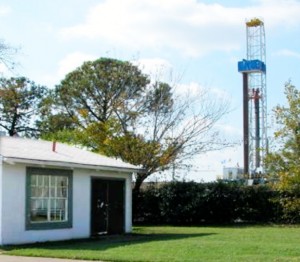 The Texas Tribune has a pretty good overview of the different ways Texas municiplaities are regulating gas drilling, including the contrast between industry-friendly Ft. Worth and a more skeptical Dallas:
The Texas Tribune has a pretty good overview of the different ways Texas municiplaities are regulating gas drilling, including the contrast between industry-friendly Ft. Worth and a more skeptical Dallas:
Meanwhile, industry representatives and some lawyers point to Fort Worth, 40 miles west of Dallas, as a model for balancing economic and environmental concerns. Between 2006 and 2012, the city took in nearly $264 million in natural gas revenue, including lease bonuses, royalties and property taxes on mineral leases.
Fort Worth’s ordinance — which limits noise, keeps most drilling 600 feet from homes and spells out duties for local inspectors — has grown to more than 60 pages from five. Most recently, the city tightened rules on gas compressors.
But environmentalists point to the city as a model to avoid. It is pockmarked with more than 1,700 producing wells, with pad sites nestled beside sports fields, homes and schools.
“It’s gradually chipping away the quality of life,” said Don Young, a 62-year-old Fort Worth native and longtime activist, who worries that drilling has worsened air quality.
In 2011, a study commissioned by the city concluded that drilling exposed residents to harmful pollutants like acrolein, benzene and formaldehyde, but not at dangerous levels.
Ridley said Fort Worth had come up several times in the planning commission’s talks, but mostly when suggesting stricter regulations. “We arrived at what we thought was an effective means to protect people,” he said.
World Health Organization: Air Pollution Causes Lung Cancer
 As of Thursday, the air you breathe CAN kill you, at least according to the World Health Organization, which officially classified air pollution as a cause of lung cancer. The move came after the group released a report earlier this year estimating that over 220,000 people died from lung cancer worldwide from exposure to bad air. Most of those deaths are occurring in countries in Asia.
As of Thursday, the air you breathe CAN kill you, at least according to the World Health Organization, which officially classified air pollution as a cause of lung cancer. The move came after the group released a report earlier this year estimating that over 220,000 people died from lung cancer worldwide from exposure to bad air. Most of those deaths are occurring in countries in Asia.
Mostly these deaths are due to Particulate Matter pollution, the ubiquitous tiny particles of soot that are produced when things burn, like gas in cars, coal or gas or waste in power plants and cement kilns, and diesel engines and flares in the the gas fields.
Researchers have been producing one study after another for years linking a variety of illness and diseases to various ingredients of dirty air and specifically, Particulate Matter. Parkinson's Disease and other nerve and brain-related ailments, heart attacks and strokes, and of course respiratory problems have all been blamed on PM, but this is the first time it's been classified as a carcinogen. Most scientists in the field believe that there's really no level of exposure to the pollution that's completely "safe."
PM levels in DFW are generally low, but they've been rising over the last couple of years, and those measured levels are based on all of two monitors for all of the Metromess, so they could mask hot spots downwind of large sources (think Midlothian, compressors, and busy freeways). The EPA has proposed a new federal standard that's much lower than the current one, but it has yet to be implemented.
New Studies Link Air Pollution to Pregnancy Risks
 Two new studies provide more evidence that current air pollution standards are not protective of human health.
Two new studies provide more evidence that current air pollution standards are not protective of human health.
On Monday, the British Medical Journal, The Lancet, published the results of a huge European-based examination of the effects of Particulate Matter pollution (PM) on the birth weight of newborns. It pooled 14 different previous studies that included more than 74.000 mother-child pairings over 12 countries.
Concentrations of PM below the current European Union standard of 25 micrograms per cubic meter of air – twice the new US standard proposed by EPA in 2012 – were linked to low birth weigh babies. The authors estimated that for every 5 micrograms increase in PM, there was a corresponding 18% increase in there risk of giving birth to an underweight child. Most scientists looking at data like this suggest there really is no safe standard for exposure to PM – that is, any amount can be harmful to health in some way. In this case, the PM was going from mother to child and affecting its health even before coming out of the womb and taking its own first breath.
“We have evidence from animal studies that the tiniest particles enter the bloodstream and go to the fetus,” said the senior author, Rémy Slama, a senior investigator at the Institute of Health and Medical Research in Grenoble, France. “Can we expect other health effects in these children? There are hints that there might be — low birth weight is a marker of negative effects in adulthood.”
PM Pollution comes primarily from types of combustion, like flares in the gas field, power plants, cement kilns and yes, your internal combustion engine in you car. PM pollution is dense along heavily-traveled roads and highways. This kind of information is slowly beginning to impact urban planning. You probably don't want to put an elementary school next to a freeway, or an apartment complex at an intersection. Likewise, you want to try to avoid living directly downwind of thick plumes of the stuff coming from, say an industrial complex that hosts three cement plants and a steel mill. i.e Midlothian.
A University of Florida study that came out last week concluded that pregnant women who live in areas with high levels of air pollution were more likely to suffer from high blood pressure. In this case, the health of approximately 22,000 pregnant women were correlated to readings from local air monitors. Those women living closer to monitors registering high levels of air pollution – defined as not only PM, but smog-forming Nitrogen Oxide and Volatile Organic Compounds – were 12 to 24 % more likely to also have high blood pressure. Although flawed in some important ways by not ruling out variables like weight, the report falls in line with previous studies linking air pollution to blood pressure spikes.
As All (Regulatory) Hell Breaks Loose in Frisco, Council Must Decide Between “Kia and Cadillac” Clean-ups
 For over a year now, Downwinders and Frisco Unleaded members have been urging the City Council and regulators to treat Exide's on-site "non-hazardous waste" landfill as a hazardous waste dump. Our characterization was based on the evidence already in the files, combined with Exide's own track record. But a new round of discoveries validates our conclusion.
For over a year now, Downwinders and Frisco Unleaded members have been urging the City Council and regulators to treat Exide's on-site "non-hazardous waste" landfill as a hazardous waste dump. Our characterization was based on the evidence already in the files, combined with Exide's own track record. But a new round of discoveries validates our conclusion.
On September 28th, the Texas Commission on Environmental Quality issued 10 violations concerning Exide's disposal and treatment of hazardous waste.
Those violations include samples taken from the closed parts of the "non-hazardous waste" landfill that turn out to be extremely hazardous. The particular cells sampled contain waste from operations as far back as 1998. That means we're looking at thousands of tons of illegally-disposed hazardous waste where there wasn't supposed to be any at all.
Exide has been arguing that any discrepancies between the toxic contents of their landfill and its "non-hazardous waste" designation was a recent problem because of a bad treatment recipe. Turns out, not so much.
In fact, after taking samples from the still-open parts of the landfill back in Spring, the state found they too violated toxicity standards. Reportedly, the TCEQ engineers have been trying to recreate Exide's "treatment process" without any success. Looking back over all the (post-closure) test results, the truth is that that "treatment process" probably never worked in the first place.
The September 28th violations also include open piles of lead slag waste on the edge of the landfill itself and stacks of 2-ton "superbags" of lead waste slag lying around various parts of the smelter site – all testing at hazardous levels for lead and other toxics, and all completely unauthorized as hazardous waste sites.
Among the most mysterious discoveries is that Exide sent over 3,300 tons of this same lead slag waste to be buried at the huge landfill in Lewisville at the corner of 121 and I-35 in May of 2012.
Exide labeled the waste "non-hazardous" as it went through the landfill's gate, but that label wasn't correct. Exide didn't adequately test the waste for cadmium, despite knowing the waste could easily test positive for the toxin. There is now going to be a whole chapter of the Exide clean-up taking place in Lewisville.
You can read the very dry TCEQ inspection report on the City of Frisco's website here. No word yet on fines or punishment. You can read the Dallas Morning News coverage here.
Now that it's official that Frisco has a hazardous waste dump, the City Council must decide by December 9th if it wants to keep that dump permanently, or dig up and haul off its toxic contents. That's the day the city must put in its monetary claim to the judge overseeing the Exide bankruptcy case.
This summer the city hired a consultant that gave it two options for dealing with the Exide site in case the company could not pay for the clean-up, which now appears likely.
The city could ask for $25 million to be set-aside for a 40-acre permanent toxic waste dump surrounded by a mile long "slurry wall" to keep the content from leaking out into Stewart Creek and Grand Park. Tha's the "Kia" option.
Or it could ask for $135 million to be set aside for a clean-up that would dig up all the waste, haul it off to a licensed hazardous waste landfill, and leave the property fit for commercial development and green space. That's the "Cadillac" option.
Even though it's probable that Exide won't have the money itself to finsih the clean-up, it's important for the Council to publicly take a stand for the complete "Cadillac" clean-up of Exide. A landfill would pose a permanent risk to both Stewart Creek abd Grand Park. Financing the plan without using Exide money will be a challenge, but then so was buying the company out and closing it down, and putting together the package that recently brought the Cowboys training facility to Frisco.
You can click here at our Citizen Action of the Week page to send a read-to-go e-mail to the Frisco City Council requesting they choose the comprehensive "Cadillac" option, You can also add your own comments too.
Besides finding massive violations in and around its Frisco landfill, the Texas Commission on Environmental Quality and EPA have also recently rejected Exide's proposed clean-up of the smelter property.
Among the largest issues was disagreement over the classification of groundwater flowing underneath the Exide site, which straddles two forks of Stewart Creek and sits in the steam's natural valley.
Both the state and EPA are insisting that the flow of Exide groundwater is so high that the entire property should be held to stricter clean-up standards – 100 times better than what Exide was proposing. This is also a standard that Frisco Uneaded and Downwinders has been pushing for.
Other issues in the rejection include the demand by the agencies that the company also address contamination in Stewart Creek, the appearance of mysterious barrels of toxic and long-ago banned PCB's, and more investigation of what kind of fill the entire complex was built on (hint: it might be the same stuff that's also going into the "non-hazarous waste" landfill).
In all there are 34 separate items that the state has given Exide to change, report on, follow-up, or sample. The TCEQ's rejection letter can be accessed and downloaded through the City of Frisco website here.
This is all good news. Frisco Unleaded has been arguing that the entire Exide site should be cleaned-up to levels that would allow residential and green space use.
On the other hand, it might all be academic because of the fact that Exide is in bankruptcy court. We'd have a standard but no money to get the job done.
That's why the decision the council makes on December 9th is so important. It must decide to ask the bankruptcy court for the amount to cover either a permanent toxic waste landfill in downtown Frisco forever, or a clean-up that will leave the site available for prime real estate development. Please send the City Council a message that you don't want them to be cheapskates with public health.
Your Tax Dollars at Work: TCEQ Argues Air IS NOT a Natural Resource
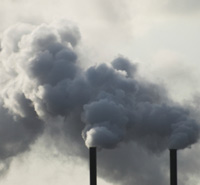 So this is how ideological things have become at the Texas Commission for Environmental Quality. Even though the agency won a fight in court to keep a group of parents represented by the Texas Environmental Law Center from being able to sue the state for not regulating Greenhouse Gases, TCEQ lawyers are working overtime to make the judge in the case retract this statement:
So this is how ideological things have become at the Texas Commission for Environmental Quality. Even though the agency won a fight in court to keep a group of parents represented by the Texas Environmental Law Center from being able to sue the state for not regulating Greenhouse Gases, TCEQ lawyers are working overtime to make the judge in the case retract this statement:
“The Court will find that the Commission’s conclusion, that the public trust doctrine is exclusively limited to the conservation of water, is legally invalid. The doctrine includes all natural resources of the State."
To the untrained eye, this might seem a pretty innocuous piece of prose. Water, air, land, these are pretty much the very definition of "natural resources." But them are fightin' words to Rick Perry's environmental watchdogs. Concede this point to the hippies, and there's a slippery slope leading all the way down to effective regulation and supervision of airborne threats to the public health. Unacceptable.
You see under state law, only water is legally treated as a natural resource in Texas, subject to what's called the "public trust doctrine," which requires government to protect and maintain certain shared resources fundamental for human existence.
TCEQ lawyers are saying air just isn't so fundamental to humans as the wet stuff, although the last time we checked, most people could only last 2 to 5 minutes without it.
State lawyers late last month argued in front of the Texas Third Court of Appeals that Judge Triana’s comments were beyond the scope of the case and should be vacated.
Terry Clawson, an agency spokesman, said….“The T.C.E.Q. has concerns with how the district court opinion addressed the matter of public trust doctrine,” Mr. Clawson added. “The scope of this doctrine is a very important issue, which deserves to be fully vetted.”
The agency complained to the court that Judge Triana’s statements were seen by the plaintiffs “as a victory,” even noting that environmental groups had called her ruling “a blockbuster” for their cause in news releases.
But David Spence, a professor of business and law at the University of Texas at Austin, said the scope of public trust was more symbolic than practical.
“In a sense it’s a kind of low-stakes argument,” Mr. Spence said. “The public trust doctrine in the U.S. is a fairly weak thing.”
Each state applies the principle differently, and few have used it with much force. The doctrine has generally been successful only at protecting open beaches for public use, Mr. Spence said.
So which is it – practical or symbolic? For both citizens and the TCEQ, the two are one in the same. Rick Perry's appointees cannot afford to let citizens get their foot in the legal door to establish a principle that may result in one day overriding their own authority, however abstract it appears that threat is now.
Likewise, in a state government as hostile to citizen concerns as this one, what do you have to lose in trying to establish a, er, beachhead, in terms of seeing safe and legal air as a finite "natural resource" that should be protected? Indeed, one of TCEQ's predecessor's names was the Texas Natural Resources Conservation Commission. It regulated air pollution in Texas – presumably because it was a Natural Resource. This "Hail Mary!" legal strategy seems at least as effective as going down to Austin every two years expecting things to get better.
The appeals court is expected to rule soon. It could remove the statement entirely from the record the way TCEQ wants, or merely say is a statement and not a legal precedent, which is what even the plaintiff's lawyers expect. Stay tuned.

